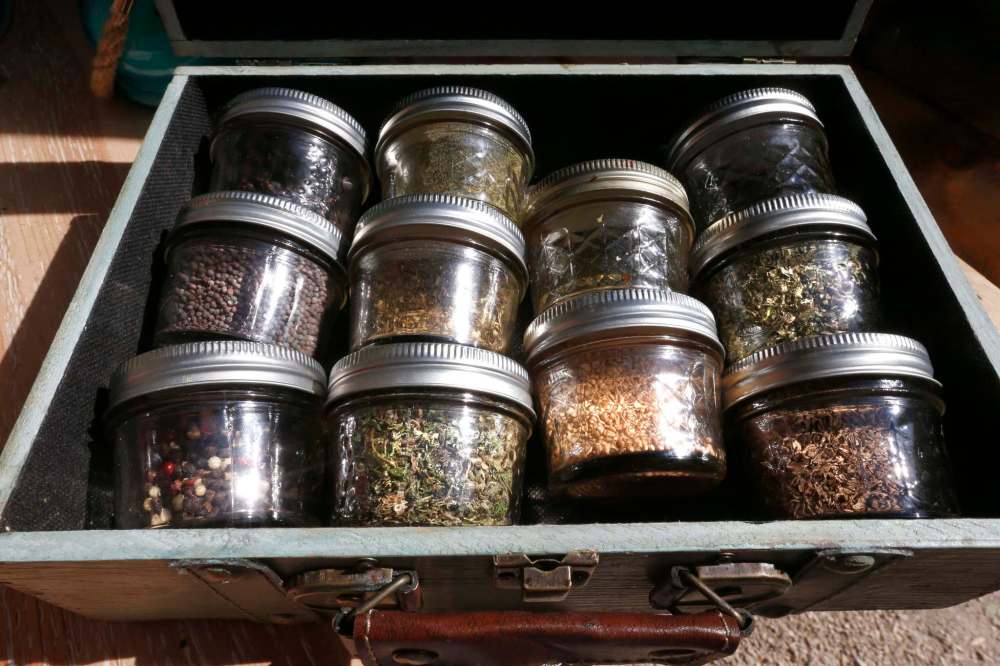Living-off-the-land lovers
Urban homesteading growing in popularity
Advertisement
Read this article for free:
or
Already have an account? Log in here »
To continue reading, please subscribe:
Monthly Digital Subscription
$0 for the first 4 weeks*
- Enjoy unlimited reading on winnipegfreepress.com
- Read the E-Edition, our digital replica newspaper
- Access News Break, our award-winning app
- Play interactive puzzles
*No charge for 4 weeks then price increases to the regular rate of $19.95 plus GST every four weeks. Offer available to new and qualified returning subscribers only. Cancel any time.
Monthly Digital Subscription
$4.99/week*
- Enjoy unlimited reading on winnipegfreepress.com
- Read the E-Edition, our digital replica newspaper
- Access News Break, our award-winning app
- Play interactive puzzles
*Billed as $19.95 plus GST every four weeks. Cancel any time.
To continue reading, please subscribe:
Add Free Press access to your Brandon Sun subscription for only an additional
$1 for the first 4 weeks*
*Your next subscription payment will increase by $1.00 and you will be charged $16.99 plus GST for four weeks. After four weeks, your payment will increase to $23.99 plus GST every four weeks.
Read unlimited articles for free today:
or
Already have an account? Log in here »
Hey there, time traveller!
This article was published 10/08/2016 (3435 days ago), so information in it may no longer be current.
People often stop at Jill Kantor’s Tuxedo home to stare.
In a neighbourhood where most front yards consist of trimmed grass, flowers and shrubs, Kantor’s is decidedly less tame.
The Winnipegger has turned her sizable yard into an urban garden — a wild patch of land on which she grows potatoes, heirloom tomatoes, cucumbers, radishes, carrots, beets, habañeros, lettuce, garlic, onions, squash, strawberries and mint, as well as numerous other vegetables, fruits and herbs.

Three years ago, Kantor — a senior partner and national field trainer for a job-recruiting company — decided to dig into the urban homesteading movement. It was a way for the busy mother, wife and executive to get back to basics and feel a real connection with the foods she and her family eat.
“For me, it’s about wanting to feel my life is nothing but simple right now because I’m so busy with work, but I’m really on this constant path,” says Kantor, who teaches homesteading classes in her spare time though her company, the Urban Homestead.
“This is all a journey, a very long journey. I don’t know if it’s one that ever ends, but it’s a journey for me to try to live more simply in a hectic world.”
She also has formed relationships with area farmers, from whom she purchases her eggs and meat.
Urban homesteading is a city-based movement aimed at growing organic produce, cooking whole foods and preserving homegrown foods in a traditional way, much like many of our ancestors did. That often means cooking with all of the animal’s parts — including feet, necks, carcasses and backs — perfect for brewing soup stocks full of collagen and minerals.
It also means turning cabbage into sauerkraut or milk into kefir — a process that requires fermentation, or harbouring so-called friendly bacteria, substances that scientists say are good for the gut.
Kantor, who grew up in Winnipeg, wants people to know they don’t have to live on a farm to be a homesteader.
“You can live in the city and do this,” she says. “If I’m going to be using a chicken to make a broth, using it in its entirety, I can use it in so many different ways. I can cook a chicken, eat the meat and then boil its bones, and then I could do something called a second-run broth.”

Where does she find the time?
She admits she doesn’t spend much time tending her garden; she hired a company — Urban Eatin’ Landscapes — for that. The company set her up with a timed irrigation system, a rainwater collection system and a compost bin to help run her garden smoothly.
Natalie Dyck of Urban Eatin’ says her organization does a lot of work with school and community gardens, but says it’s always rewarding to work with residential customers such as Kantor and help them transform their lives.
“She wanted to spend more time outside. She wanted to produce food and cook with it,” says Dyck, who also helps people with much less space set up gardens.
She notes in Kantor’s case, the initial investment can be expensive, but the long-term payoff is big, especially when planting perennials that yield produce season after season.
Dyck, who lives in Winnipeg’s downtown, grows her own produce in her small yard.
“I grow a lot of things in pots. I have pots of peppers and mustard greens, some different kinds of herbs and tomatoes,” she says, adding she feels gardening is therapeutic.
“I grow a lot of things and I harvest it from my garden every day or every two days. When I get home at the end of the day I have my little horticulture therapy.”

Adrienne Percy, a former Manitoban who moved to Saskatoon, inspired Kantor to homestead. She teaches traditional food-preparation classes and relishes living off the land — even in the city. She says it has improved her health and given her a sense of peace she can’t get from processed foods.
“It does not matter where you live. You can grow your own food,” says Percy.
Kantor says at the end of a long day, there’s nothing quite like harvesting produce from her yard, knowing it will go into a family meal.
“I love it. I want more days like that.”
shamona.harnett@freepress.mb.ca
History
Updated on Wednesday, August 10, 2016 9:08 AM CDT: Photos added.

